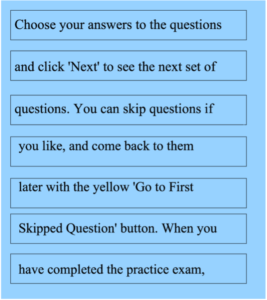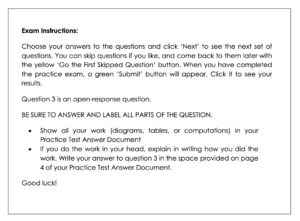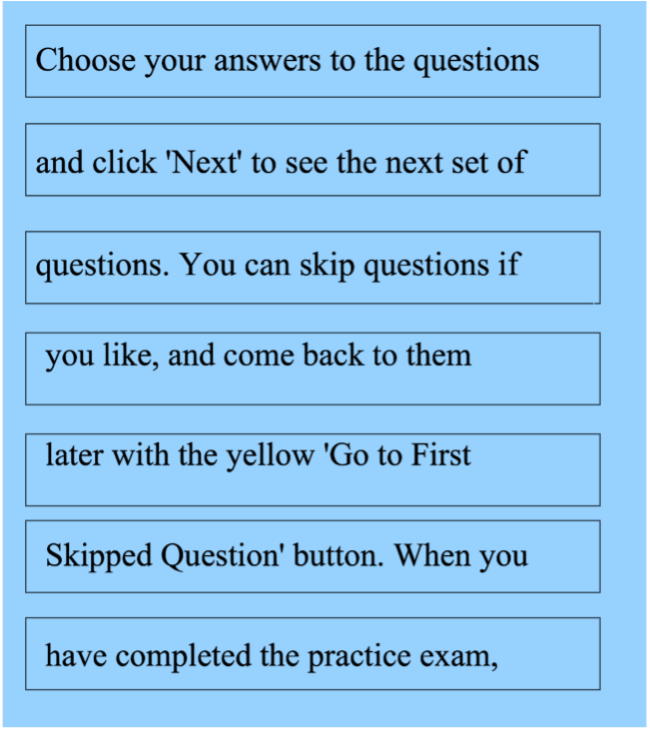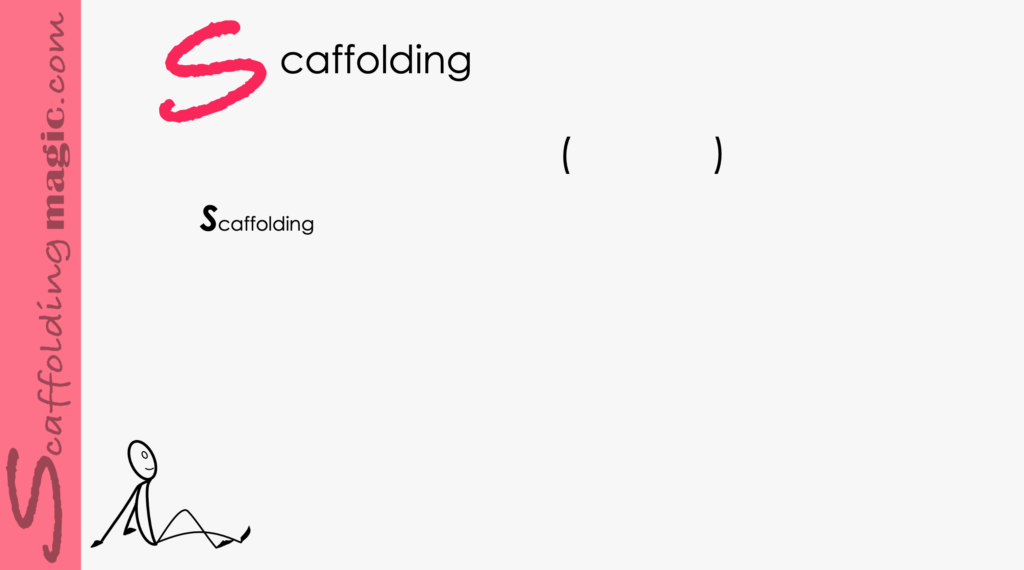You caught a beauty!!!
Download PDF of scaffold here.

Download PDF of scaffold here.
theory behind scaffold…
‘I knew I was going to fail when I didn’t even understand the instructions on the exam’, sobbed a student after failing an exam that she had studied diligently for.
‘Instructions on exams, worksheets, laboratory reports, etc., are more confusing and intimidating for our students than we might recognise, and so it’s something we rarely address when helping our students to prepare for any type of evaluation.*
Exams are often frightening for our students and there is a lot of pressure – from themselves, from their parents, from their peers – to focus on marks and not necessarily to learn the material.
Yet we often forget that even if they have managed to learn the information, the instructions used on virtually any type of evaluation, is almost always very different from the words, phrases, terms and the structure of the sentences we use day-to-day.
In our pursuit to help our students become effective learners, we need to address not just content, but the instructions that proceed that content: in exercise books, in laboratory reports, in essay prompts, in computer programming, in construction procedures, in exams, etc.. Many times the difference between passing a failing a course is the knowledge (or lack thereof) of the language used in the instructions during the learning process.
This scaffolding activity not only aids students in breaking down challenging vocabulary and structure, but it is also a perfect way of helping to balance diversity; those students who need to move to be able to assimilate information, to speak, to use interpersonal skills, to touch and manipulate information, will enjoy participating. The scaffold promotes collaboration, critical thinking, and inferencing, many other essential 21st century skills.
The example we give is for an online biology exam. Because of how familiar we are with the language, the instructions may look benign at first; however, once we begin to look at them more closely, we’ll admit that they might impede our students from proceeding forward with a lot of confidence. You’ll see how easy the scaffold is to adapt to your needs.

Step by Step…
- On a separate piece of paper, copy and paste the instructions to the exam your students are about to take.

2. Enlarge the sentences, put ample space between each line (separate them by words, not sentences. This will obligate your students to think more critically during the activity. You can use this template.) and print them out. (See example on the left.)
- Cut up the lines and make sets for each group of students.
- Give each group a set and begin by putting the first line of the original on the wall or the floor where everyone can see. Each group finds that line and places it on their desks.
- As a chorus, you all verbalise the first line aloud.
- Groups negotiate which line comes next, they hold the one they believe is appropriate over their heads, and you confirm (or not) their choice by putting the next line under the first.
- The groups find that line, put it under the first and as a chorus, you all repeat the first two lines.
- You continue this dynamic until all the instructions are placed down and you have all (as a chorus) repeated
- You begin with: ‘Exam Instructions: Choose your answers to the questions’
- You: Silvia and Sabastian, what do you think the next words might be?
- Silvia and Sabastian: Maybe, ‘and place a tick’…
- Pair 1: I think we have the next words. (They add their slip of paper to what is already mounted and say: ‘Exam Instructions: Choose your answers to the questions’, ‘and click ‘Next’ to see the next set of’
- You: Padem and Raija, what do you think the next words might be?
- Padem and Riaja: Maybe, ‘multiple choice answers’
- Pair 2: I think we have the next words. (They add their slip of paper to what is already mounted and say: ‘Exam Instructions: Choose your answers to the questions’, ‘and click ‘Next’ to see the next set of’ and You can skip the next set of questions if’
- Etc.
- By the time the complete instructions are stuck to the wall in order, the students will have read and/or heard them many times and will begin to feel familiar with the language and structure in a way they probably did not before.)
- Clarify any doubts students may have about the academic language/structure of the instructions.
- Formative evaluation: Ask pairs of students to rewrite the instructions in their own words. They read these to their classmates and receive respectful comments on whether the have faithfully re-written the intentions of the instructions.
- Reflection: Pairs join with another pair and spend 2-3 minutes discussing whether they would have understood the instructions without having participated in the scaffold, and whether this has helped them feel more confident (or not) about sitting for an exam in the future.
video explanation of scaffold…




Scaffoldingmagic.com is your entryway into DYNAMIC bilingual learning methodologies, such as Phenomenon-Based Learning, CLIL, EMI, and ESL. You’ll find ways to implement critical thinking tools (DOK) to promote higher level thinking, the growth mindset, instill an ethic of excellence, deep reflection on learning, and all through multi-cultural, interdisciplinary activities. We have the keys to turning competences into action and to creating collective efficacy in your school so you move ahead as a unified, enthusiastic team.



